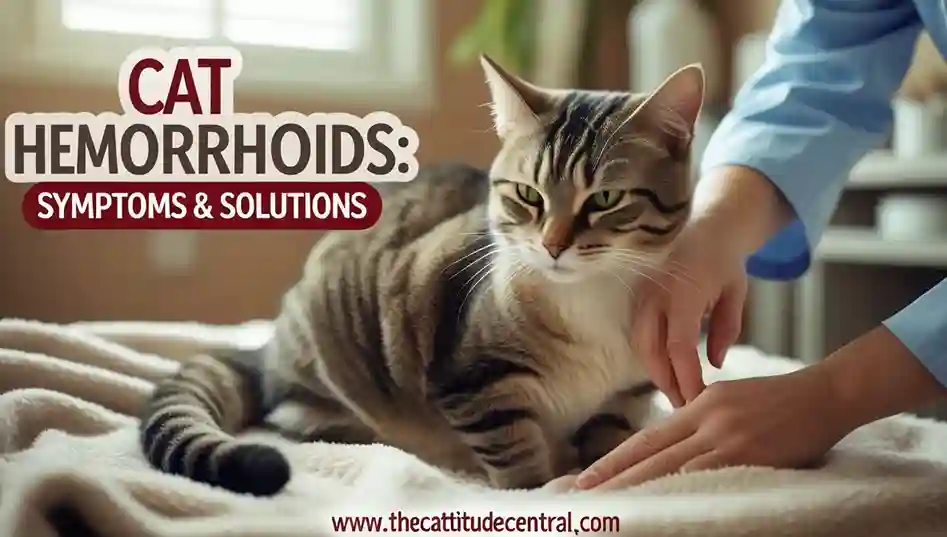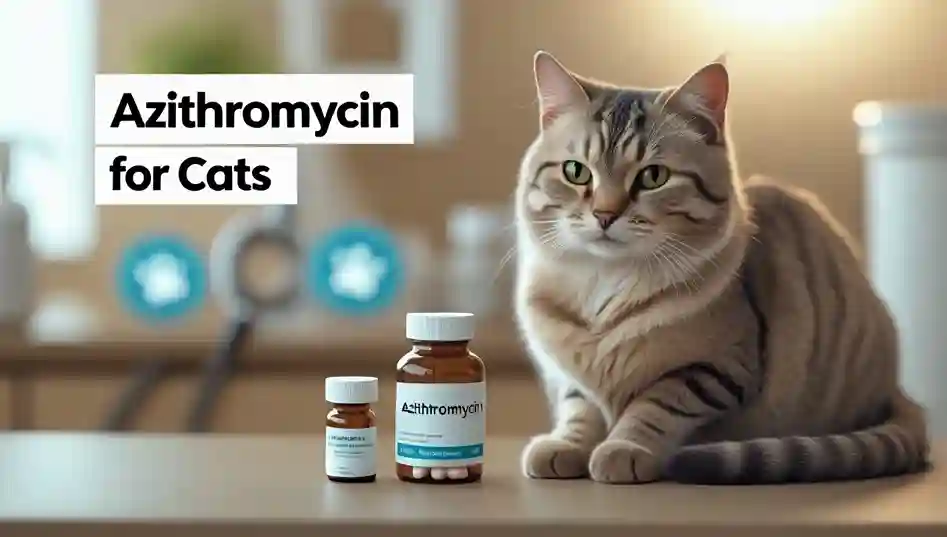Amitriptyline for cats is a tricyclic antidepressant commonly prescribed by veterinarians to address a range of feline health issues, including anxiety, inappropriate urination, and chronic pain conditions. Originally developed for human use, this medication has found a significant place in veterinary medicine due to its ability to modulate behavior and alleviate discomfort in cats. However, its use requires careful consideration of dosages, potential side effects, and veterinary oversight to ensure safety and efficacy.
This comprehensive guide explores everything cat owners need to know about amitriptyline for cats, including its benefits, risks, administration tips, and frequently asked questions based on current trends. Whether you’re a pet parent seeking solutions for your cat’s behavioral or medical issues or simply curious about this medication, this article provides science-backed insights to help you make informed decisions.
What Is Amitriptyline for Cats?
Amitriptyline is a tricyclic antidepressant that works by affecting neurotransmitters like serotonin and norepinephrine in the brain. In cats, it’s primarily used off-label, meaning it’s prescribed for purposes not officially approved by the FDA but supported by veterinary expertise. Amitriptyline for cats is often recommended for conditions such as:
- Behavioral Issues: Anxiety, stress-related behaviors, or compulsive disorders like excessive grooming.
- Urinary Problems: Feline idiopathic cystitis (FIC) or inappropriate urination due to stress or inflammation.
- Chronic Pain: Conditions like arthritis or neuropathic pain, where amitriptyline’s nerve-modulating properties can help.
The medication comes in tablet or liquid form, with tablets being the most common for feline use. While effective, amitriptyline for cats requires precise dosing and veterinary guidance to avoid adverse effects.
How Does Amitriptyline Work in Cats?
Amitriptyline for cats functions by inhibiting the reuptake of serotonin and norepinephrine, which helps regulate mood and reduce stress-related behaviors. For urinary issues, it may reduce bladder inflammation and relax the urinary tract, making it easier for cats to urinate comfortably. In pain management, amitriptyline’s ability to modulate nerve signals can alleviate discomfort from chronic conditions.
The exact mechanism depends on the condition being treated:
- Anxiety and Behavior: By increasing serotonin levels, amitriptyline for cats can reduce anxiety-driven behaviors like spraying or overgrooming.
- Urinary Health: Its antihistamine and anti-inflammatory properties may soothe the bladder lining, addressing symptoms of feline idiopathic cystitis.
- Pain Relief: Amitriptyline’s effect on nerve pathways can dampen pain signals, offering relief for conditions like arthritis or nerve injuries.
Because cats metabolize medications differently than humans or dogs, dosages are typically much lower, and the effects can vary based on the cat’s size, age, and health status.
Benefits of Amitriptyline for Cats
Amitriptyline for cats offers several benefits when used under veterinary supervision:
- Behavioral Improvement: Cats with anxiety or compulsive behaviors, such as excessive licking or aggression, often show marked improvement. For example, a cat that sprays due to stress may reduce or stop this behavior with amitriptyline.
- Urinary Health Support: For cats with feline idiopathic cystitis or stress-induced urinary issues, amitriptyline can reduce inflammation and promote bladder comfort.
- Pain Management: Cats with chronic conditions like arthritis or neuropathic pain may experience improved quality of life.
- Cost-Effective: Amitriptyline is generally affordable compared to other specialized veterinary medications, making it accessible for many pet owners.
For cat owners seeking products to complement amitriptyline treatment, consider calming aids like the FELIWAY Classic Cat Calming Diffuser available on Amazon. This product can enhance the calming effects of amitriptyline for cats by releasing pheromones that reduce stress-related behaviors.
Potential Side Effects and Risks
While amitriptyline for cats can be highly effective, it’s not without risks. Common side effects include:
- Sedation: Cats may appear drowsy or lethargic, especially when starting the medication.
- Dry Mouth and Constipation: Amitriptyline’s anticholinergic properties can reduce saliva production and slow digestion.
- Weight Gain: Some cats may experience appetite changes, leading to weight gain.
- Urinary Retention: In rare cases, amitriptyline can make urination more difficult, which is particularly concerning for cats with urinary issues.
- Heart Issues: Cats with pre-existing heart conditions may be at risk, as amitriptyline can affect heart rhythm.
Serious side effects, though rare, include seizures or severe allergic reactions. Always consult a veterinarian before starting amitriptyline, and never adjust the dose without professional guidance. Cats with liver or kidney disease, diabetes, or hyperthyroidism may not be suitable candidates for this medication.
Dosage and Administration Guidelines
Administering amitriptyline for cats requires precision to ensure safety. Dosages typically range from 0.5 to 2 mg per pound of body weight, given once or twice daily, depending on the condition being treated. For example:
- Anxiety: 0.5–1 mg/lb once daily, often at night due to sedative effects.
- Urinary Issues: 1–2 mg/lb, split into two doses daily.
- Pain Management: Lower doses, around 0.5 mg/lb, may be used to minimize sedation.
Tips for Safe Administration:
- Follow Veterinary Instructions: Never use human amitriptyline prescriptions for cats, as the formulations and dosages differ significantly.
- Use a Pill Dispenser: For tablet administration, consider a Pet Piller from Amazon, which makes giving medication to cats easier and less stressful.
- Monitor for Side Effects: Watch for signs like excessive lethargy, vomiting, or changes in appetite, and report them to your vet immediately.
- Gradual Withdrawal: If discontinuing amitriptyline for cats, taper the dose gradually to avoid withdrawal symptoms.
Liquid formulations may be available for cats that resist tablets, but these must be compounded by a veterinary pharmacist to ensure proper dosing.
Complementary Products for Cat Health
To support the effects of amitriptyline for cats, consider these Amazon products that align with common uses of the medication:
- FELIWAY Classic Cat Calming Diffuser: Ideal for cats with anxiety or stress-related behaviors, this diffuser mimics feline pheromones to create a calming environment.
- PetSafe ScoopFree Self-Cleaning Cat Litter Box: For cats with urinary issues, a clean, stress-free litter box can reduce inappropriate urination.
- Vetoquinol Zylkene Calming Supplements: These non-prescription supplements can complement amitriptyline for cats by promoting relaxation without sedation.
Always consult your veterinarian before combining supplements or environmental aids with amitriptyline for cats to avoid interactions.
Veterinary Oversight and Monitoring
Regular veterinary checkups are crucial when using amitriptyline for cats. Your vet may recommend:
- Baseline Tests: Bloodwork to assess liver and kidney function before starting the medication.
- Follow-Up Visits: To monitor the cat’s response and adjust dosages as needed.
- Behavioral Tracking: Keeping a log of your cat’s behavior or symptoms to evaluate the medication’s effectiveness.
If your cat shows no improvement after 4–6 weeks, your vet may explore alternative treatments, such as fluoxetine for anxiety or buprenorphine for pain.
FAQs About Amitriptyline for Cats
Based on Google Trends and common search queries, here are answers to frequently asked questions about amitriptyline for cats:
1. Is amitriptyline safe for cats?
Amitriptyline for cats is generally safe when prescribed by a veterinarian and used as directed. However, it can cause side effects like sedation, dry mouth, or urinary retention. Cats with certain health conditions, such as heart disease or diabetes, may not be suitable candidates. Always consult your vet for a tailored assessment.
2. How long does it take for amitriptyline to work in cats?
The effects of amitriptyline for cats may take 1–4 weeks to become noticeable, especially for behavioral issues or chronic pain. Urinary benefits may appear sooner, within a few days to a week, depending on the cat’s condition.
3. Can I give my cat amitriptyline without a prescription?
No, amitriptyline for cats should never be given without a veterinary prescription. Human formulations may contain harmful additives, and incorrect dosing can lead to serious side effects or toxicity.
4. What should I do if my cat misses a dose?
If a dose is missed, give it as soon as possible unless it’s close to the next scheduled dose. Never double the dose to make up for a missed one, as this can increase the risk of side effects. Contact your vet for guidance.
5. Are there alternatives to amitriptyline for cats?
Yes, alternatives include fluoxetine or gabapentin for anxiety, buprenorphine for pain, or environmental modifications like pheromone diffusers for stress-related behaviors. Your vet can recommend the best option based on your cat’s needs.
6. Can amitriptyline be used long-term in cats?
Amitriptyline for cats can be used long-term for chronic conditions like feline idiopathic cystitis or arthritis, but regular veterinary monitoring is essential to ensure safety and adjust dosages as needed.
Conclusion
Amitriptyline for cats is a versatile medication that can significantly improve the quality of life for felines struggling with anxiety, urinary issues, or chronic pain. When used under veterinary supervision, it offers a cost-effective and effective solution for many common feline health challenges.
By combining amitriptyline with supportive products like calming diffusers or self-cleaning litter boxes, cat owners can create a holistic approach to their pet’s well-being.
Always prioritize veterinary guidance, monitor for side effects, and stay informed about your cat’s response to the medication. With the right care, amitriptyline for cats can be a game-changer for your feline friend.
Sources:



